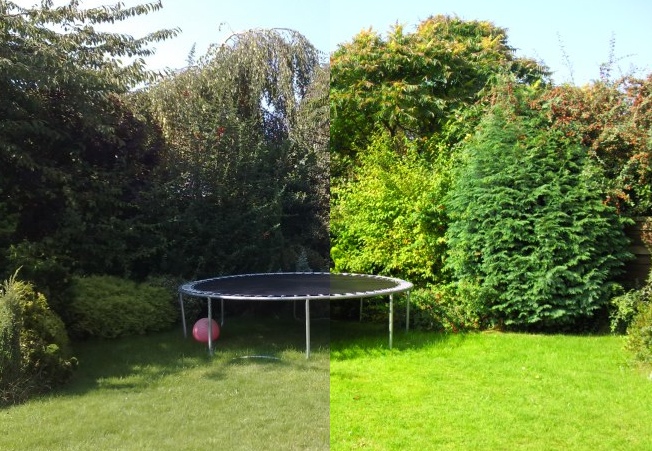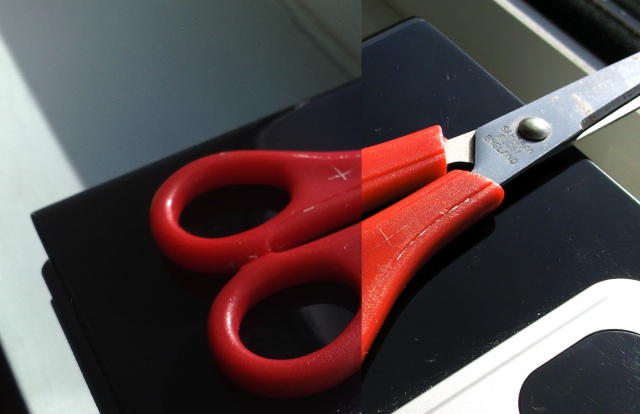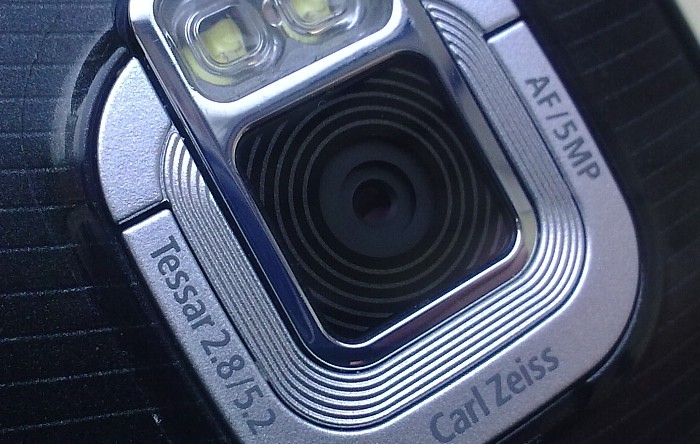|
One great camera phone produces an image that's full of detail.
Another great camera phone produces an image with similar detail but
totally different colouring - but which is 'right'? I explain that 'right' is somewhat subjective and that what you see from a digital camera is always heavily influenced by what the manufacturer thinks you'll prefer to see.
"Ultimately, of course, the
answer is that there's no absolute 'right', even at a scientific level
- colours of 'reflected' light (as in a real world scene) are
subjective by definition. You can hook up a spectrometer and then
compare its output to a spectrogram from a captured photo of the same
scene and (try to) pronounce 'accuracy' this way, but it turns out that
digital camera always 'lie' to some extent." Here, take a look: One great camera phone produces an image that's full of detail.
Another great camera phone produces an image with similar detail but
totally different colouring - but which is 'right'? Ultimately, of course, the answer is that there's no absolute
'right', even at a scientific level - colours of 'reflected' light (as
in a real world scene) are subjective by definition. You can hook up a
spectrometer and then compare its output to a spectrogram from a
captured photo of the same scene and (try to) pronounce 'accuracy' this
way, but it turns out that digital camera always 'lie' to some extent. As we get older, our eyes change and (usually) are able to detect
less detail (even with added optical aids like spectacles) - which is
why I'm always asking my ten year old what 'that sign over there' says.
There will also be changes in how we perceive colours. Then there are
environmental issues, with the bright sun in sunnier climates causing
colours to seem more naturally vibrant, while the typically overcast or
partially-obscured skies of other countries (e.g. the UK) causing
colours to seem weak for much of the time. And there are cultural
factors, too. Talking to an insider in the camera-phone design
business, he confided that even with identical hardware, manufacturers
altered the software algorithms that process the raw data from the
camera so as to emphasise the colours to a greater or lesser degree
depending on the market the phone was being sold into. So, for example,
those in the Far East apparently prefer far more saturated colours
while in the West we prefer things more muted and 'lifelike'. 
So, faced with shots from, for example, the Nokia N82 (left) and Samsung INNOV8 (right) a few months ago
it was striking that the split on which of the very different photos
was preferred was about 50:50. Even though none of the readers of the
piece were actually there at
the instant when the shot was taken. Surely both photos can't be
'right'? The fact that the grass is a pleasing shade of green means
different things to different people, for whom the very concept of
'pleasing' is different. 
Or take a test subject - say a pair of red plastic scissors, shot in
sunlight. Lets use the same two test phones again. A big, big
difference in colouration. Subjectively, it's clear to me (with the
real scissors in front of me) that the INNOV8's photo (on the right)
puts a false 'orangeness' into the red handles. While the Nokia N82's
photo is fairly accurate but isn't as 'exciting', somehow. And therein lies the rub. Between these two extremes, manufacturers try to juggle their parameters and algorithms, balancing: - contrast
- brightness
- sharpness
- saturation
- noise reduction
- JPG compression
to produce photos that will please the phone's owner. He or she will
say 'This produces really nice photos' and the manufacturer's job is
done. Since there's usually no scientific measure available of how
accurate the colours are in a scene as perceived by a specific human
being's retinas, it actually doesn't matter that the colours in a photo
are not quite accurate - all that matters is that the photos look as
good as (or artifically better than) the (remembered) scene in real
life. So, remember that the camera neveralways
lies. But the likes of Nokia, Samsung and Sony Ericsson are at least
lying in order to make you and your subjects look good! 
|